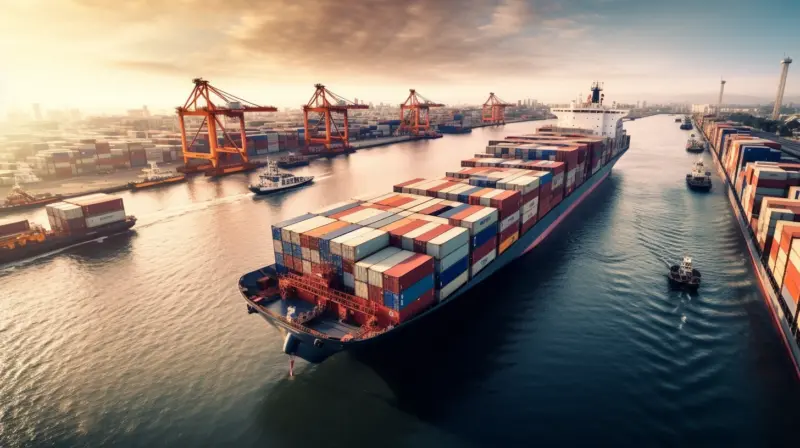With Return Policies, Retailers Must Strike a Balance Between Customer Satisfaction and Operational Efficiency
Retail return policies were liberal during the pandemic, but those expensive returns come with a price tag to the bottom line. Can retailers find a happy medium?
Fashion retailer H&M recently navigated a policy hiccup, where it initially set a £1.99 fee for shoppers wishing to return online purchases, a charge applicable in-store and online. However, after a wave of clarity, H&M revised its stance, now waiving this fee for in-store returns while maintaining it for items returned to their warehouse. This adjustment aligns H&M with other retail giants like Zara and Next, who already facilitate free in-store returns, acknowledging the financial and ecological burdens tethered to the processing of online returns.
This policy reshuffle leaves room for pivotal queries within the retail landscape: as return policies evolve, how should stores juggle between customer satisfaction and supply chain efficiency? Moreover, to adeptly manage a surge in in-store returns while curtailing associated costs and operational hurdles, what steps might retailers take to fine-tune their reverse logistics and supply chain frameworks?
Pradip Shukla, Associate Professor of Management at Chapman University, recognizes the tricky balance between a retailer’s return policies and public perception. Still, with operational efficiencies, cost overruns, and environmental waste at stake, re-assessing store and online returns may be unavoidable.
Pradip’s Thoughts
“It’s, I think, an important topic area because ultimately, customer satisfaction is based on the purchase of the item, satisfaction with the item, and then the opportunity, if you’re not satisfied, for the company to make it correct, either through a refund or exchange or return. And Amazon has, I think, been very popular because of their return policy, sort of pretty much no questions asked in 30 days, and they didn’t charge anything for returned items. Now, recently, I think Amazon has recognized that there is a problem, and H&M, I think, is also recognizing because some individuals, unfortunately, consumers take advantage of a lenient return policy, and in particular, Amazon has been looking at charging like $1 for returning something back through the UPS. Now, $1 is nominal, similar to H&M, but what they’re trying to do is to get consumers to recognize that, think twice before you purchase an item, and give it some thought.
And what I look at with supply chain and management of this sort of return policy is you wanna look at what is the cause of the return, and if it’s where the product is generally broken, it’s not working, it’s defective, it’s missing a part or a piece, it’s the wrong size, and it’s mislabeled, then 100% the customer should get a return, and there should not be any charge or penalty to the customer. On the other hand, I know consumers myself where when it comes to apparel like H&M or purchasing through Amazon, they say, I don’t really know which dress I’m gonna like and what color and different styles, so I’ll order three, and it’ll be different colors, and I’m only gonna pick one, and I’m only gonna keep one, but I want to try on all three. So what they do is they use sort of like these deliveries and online purchasing as sort of like a virtual fitting room, and that becomes a problem for H&M because the customer knows when they place the order, they put it in the cart, I’m only going to keep one. And the same thing, let’s say a customer goes into a retail store at H&M, they again do the same thing, they say, I don’t have time to go in the fitting room, I’m going to take five pieces of clothing home, I’ll try it at home, I’ll look in the full view mirror, and then I’ll return four of them.
In those kinds of situations, I think H&M and Amazon, they do need to add some sort of fee or some cost to the return policy because it’s creating additional operational expenses for those organizations.”
How might retailers optimize their reverse logistics process?
“You know, we have seen a growth in online sales and electronic commerce, so stores have to recognize that you have your brick-and-mortar presence, you have your footprint, but you’re going to continue to have more and more demand for returning items in the store. Now, the reason customers are going to require going into the store they’re not gonna pay for the shipping and handling and the postage to return it through traditional return channels. So they should anticipate, and the way to look at it is, don’t look at it in terms of the number of units that are being returned or the dollar volume of the returned items in sale. We’ve got a problem. Our returns in store are increasing by 25%. The way to look at it really more analytically is to say what percentage of our total sales online or in the brick-and-mortar store are being asked to be returned.
And that number, I would assume, is staying fairly stagnant. So, it’s not that we’re seeing all of a sudden more consumers wanting to return items, and we have a big problem. You’re selling more, and you’re having the same percentage of items that customers wanna get returned. So, I don’t see it as being a major problem. If you’re able to increase your capacity to have the items on the shelf if you’re able to increase your capacity to deliver the items to the customer’s door, then you have the staffing already in place, you have the infrastructure, you have the facilities to accept them back. So, I don’t see it requiring a major disruption or adding additional staffing, adding additional cash expenditure to organizations. It’s something where you’re already benefiting from the sale. So, you may as well offer the customer the opportunity to be satisfied.”
Any additional implications to consider?
“One thing I looked at was just sort of looking at different return policies. And I think for a lot of the readers, MarketScale and others, they may be too young to remember, but we had organizations like Toys R Us, where they were notorious for an easy return policy. And some consumers would take advantage where they would buy toys, the children would abuse, use the product, and it would no longer work. And they would say, after 60, 90 days, I wanna return this for full cash. And this is where I think companies have to learn from the Toys R Us experience. And I think that was partially one of the causes of their decline, along with Amazon selling toys online. But instead of offering a full cash refund, consider offering an exchange. At least that way, you make sure that you’re not getting a customer buys, then they get their money back, and then they’re gonna go buy from your competitor. The other thing is if there is a significant cost, I think consumers recognize that, and they’re willing to pay. So, as long as you explain, why am I paying 150? Why am I paying $1? Why am I paying $3? And I think consumers have recognized that with major appliances. If you bought from Best Buy a refrigerator, washer, dryer, and you wanted to return it back, they would charge a restocking fee of 10 to 15%, depending on the organization.
And I think the same thing with H&M and Amazon; they have to explain to consumers what is their cost involved. And why are they asking for this? They’re not asking the consumer to pay the entire full cost but to share in the cost of the exchange. And I think the last thing I would add is from an environmentalist perspective, I teach a lot of younger students, undergraduates, and they’re quite concerned about the environment. And I think by having a no-cost return policy, you’re adding to the pollution because you have the carbon footprint, even if it’s an electric vehicle, the charging energy requirements. What happens is you have the energy costs and the footprint to deliver to the consumer’s home. Now, you have the consumer going back to the retail store or UPS. If the consumer thinks twice and says, okay, let me pause 10 seconds before I put this into the cart, that would have a significant impact on reducing some of our pollution. So, I think I support these policies, H&M, what they’re looking at. I support what Amazon is doing because it’ll make consumers think a little bit before they just, oh, one click, and so the cart is being delivered.”
Article by James Kent
Recent Posts

To alleviate the pressure on an increasingly burdened supply chain, could gigantic barges on inland waterways offer a way forward? Amidst the backdrop of a rapidly transforming logistics landscape, the U.S. is harnessing the enhanced capabilities of inland waterway gigantic barges to fortify its supply chain. As logistical norms pivot in response to environmental…



